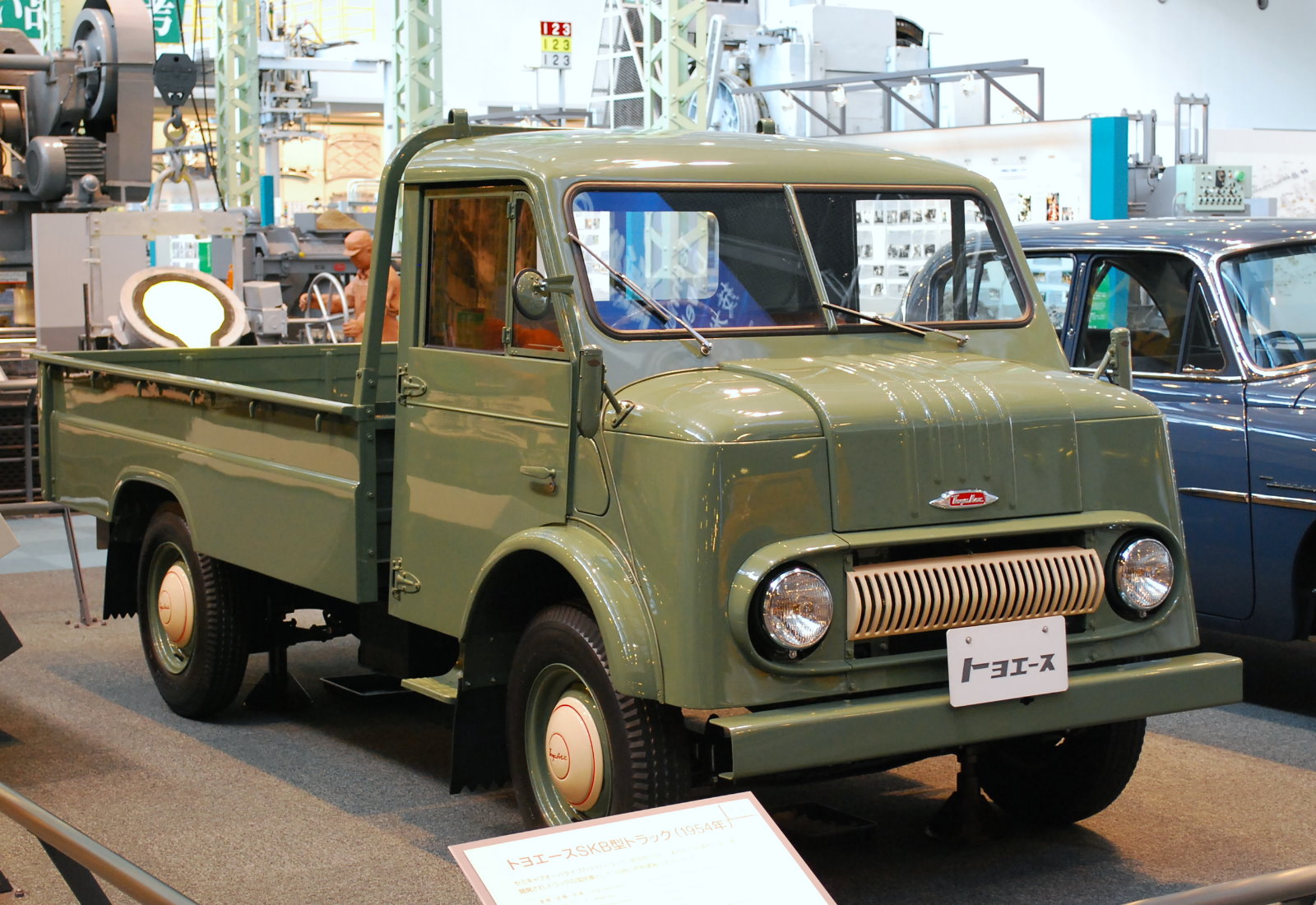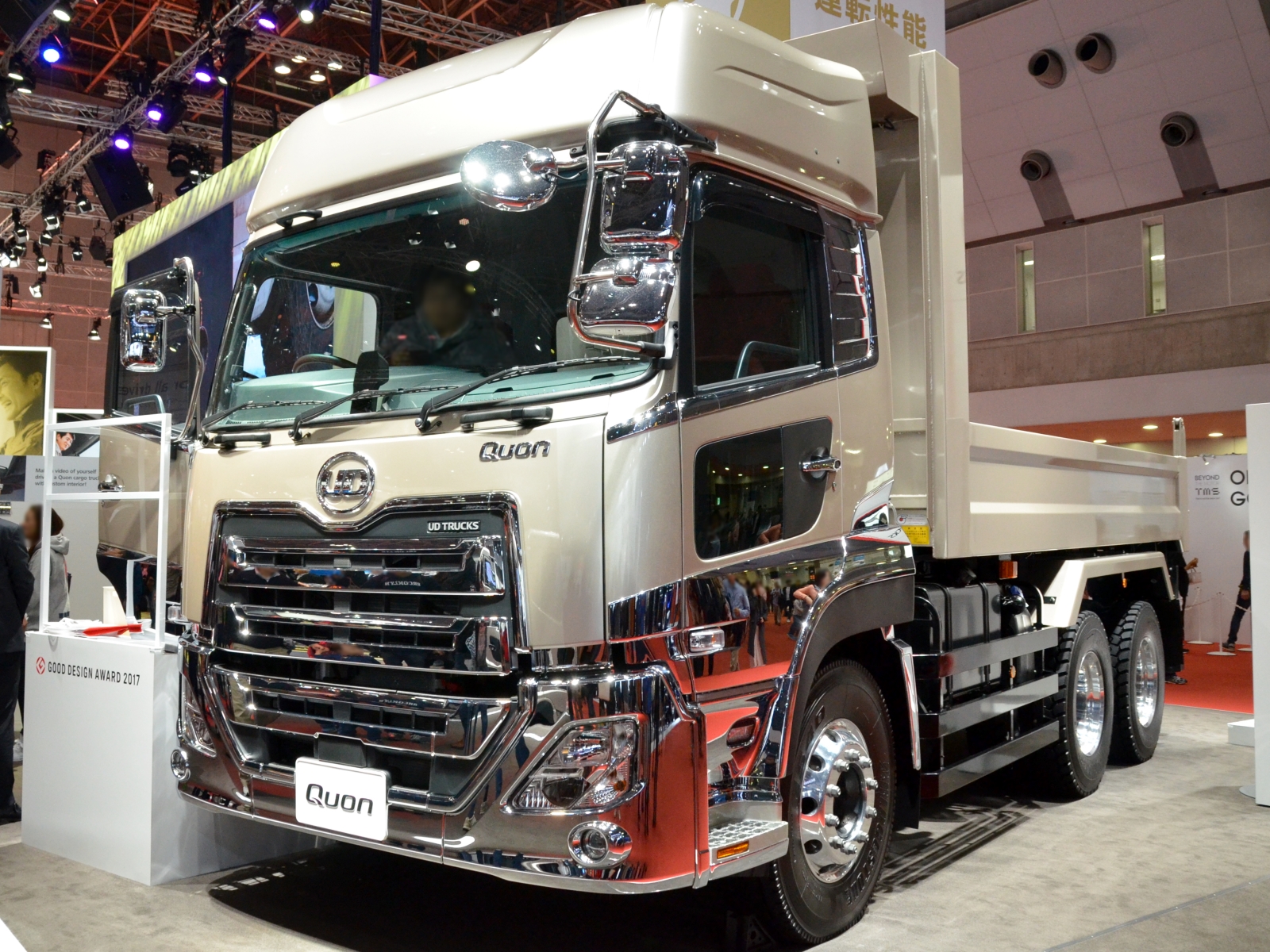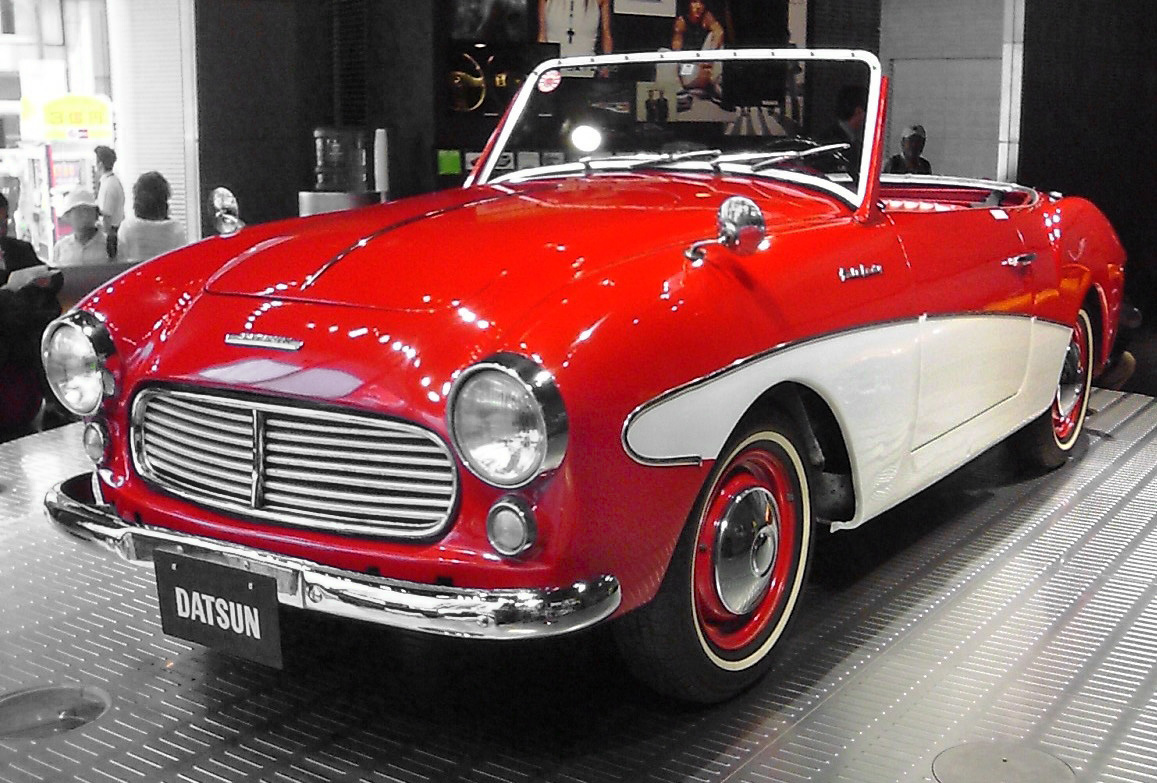|
Tokyu Kogyo Kurogane
, or Kurogane, was one of the first Japanese automakers. It built vehicles from about 1926 until 1962 when a subsidiary of Nissan, called Nissan Machinery (Nissan Koki Co., Ltd. 日産工機), assumed operations as the company had become a member of the Nissan Group '' keiretsu''. The word is an old term for iron, and one of the ''kanji'' used in Mr. Makita's first name. Remnants of the company were called Nissan Machinery ( Nissan Koki) until 1985, and operated as a separate entity within Nissan Techno ( 日産テクノ) until 2006, building and developing all of Nissan's current engines. History The company can be traced back to the small company founded by Tetsuji Makita (蒔田鉄司) in 1917, which was a parts supplier for bicycles and motorcycles. Mr. Makita left the company in 1918 to work for Toyogawa Hayataya (豊川順彌) and the Hakuyosha Ironworks Company (白楊社), manufacturer of the Otomo car, having manufactured 300 by 1927. The company actively entered in ... [...More Info...] [...Related Items...] OR: [Wikipedia] [Google] [Baidu] |
Nissan
, trading as Nissan Motor Corporation and often shortened to Nissan, is a Japanese multinational automobile manufacturer headquartered in Nishi-ku, Yokohama, Japan. The company sells its vehicles under the Nissan, Infiniti, and Datsun brands, with in-house performance tuning products (including cars) labelled Nismo. The company traces back to the beginnings of the 20th century, with the Nissan '' zaibatsu'', now called Nissan Group. Since 1999, Nissan has been part of the Renault–Nissan–Mitsubishi Alliance (Mitsubishi joining in 2016), a partnership between Nissan and Mitsubishi Motors of Japan, with Renault of France. , Renault holds a 43.4% voting stake in Nissan, while Nissan holds a 15% non-voting stake in Renault. Since October 2016 Nissan has held a 34% controlling stake in Mitsubishi Motors. In 2013, Nissan was the sixth largest automaker in the world, after Toyota, General Motors, Volkswagen Group, Hyundai Motor Group, and Ford. In 2014, Nissan was the la ... [...More Info...] [...Related Items...] OR: [Wikipedia] [Google] [Baidu] |
Tokyu Corporation
The is a Japanese multinational '' keiretsu'' (conglomerate) holding company headquartered in Shibuya, Tokyo. Its main operation is , a wholly owned subsidiary operating railways in the Greater Tokyo Area. History The oldest predecessor of company was the , opened in 1908; the railway's operations were converted into a company in 1910. Keita Gotō, now known as a notable Japanese industrialist, was appointed as the CEO of the Musashi Electric Railway in 1920 and later he began a mass expansion program. The most important predecessor was first registered on September 2, 1922, as the and is related to the construction of Den-en-chōfu (it was originally founded by the developers of Den-en-chōfu); it was acquired by the Musashi Electric Railway in 1924, shortly before Musashi was renamed into the , also known as the Toyoko, in the same year. After Musashi/Toyoko's acquisition, the Meguro-Kamata Electric Railway initially operated as a subsidiary of Toyoko. It was not unti ... [...More Info...] [...Related Items...] OR: [Wikipedia] [Google] [Baidu] |
Hino TH-series
In May 1950 the heavy-duty Hino TH10 truck was introduced, equipped with the all-new 7-liter DS10 diesel engine. An eight-tonner, this was considerably larger than existing Japanese trucks which had rarely been built for more than payload. The model became a common sight in Japan and in Southeast Asia, its main export market, before being retired in 1968 in favor of the more modern cab over trucks which succeeded it. The Hino TE and derivatives was the first truck to be manufactured in Myanmar, where it was built until the turn of the millennium. History The TH10 had a wheelbase and a DS10 diesel inline-six. Around the time of introduction, the BH10 bus was introduced, with the same chassis and nose. Ozeki, p. 87 In 1954 the TH11 appeared, followed by the 125 PS TH12 in 1955. Ozeki, p. 116 This engine was called the DS12. In 1956 the TH13 arrived. In 1960 power went up to 155 PS for the TH16. By June 1961 the trucks had become the TH17, with an eight-liter engine with ... [...More Info...] [...Related Items...] OR: [Wikipedia] [Google] [Baidu] |
Toyota Dyna
The Toyota Dyna is a light to medium-duty cab over truck for commercial use. In the Japanese market, the Dyna is sold alongside its twin called the Toyoace. The Toyoace was a renaming of the Toyopet SKB Truck as a result of a 1956 public competition with 200,000 entries. "Dyna" is short for dynamic. The Dyna was originally available in Japan only at '' Toyota Diesel Store'' locations, then later available at ''Toyota Store'' locations, while the Toyoace twin was available at ''Toyopet Store'' locations. The Dyna was also sold as the Daihatsu Delta and the Hino Dutro. In Japan, its traditional competitors are the Isuzu Elf, the Mitsubishi Fuso Canter and the Nissan Atlas. The former Central Motors produced the Dyna Route Van from April 1957 to June 1967. History RK52 The Toyopet Route Truck RK52 was the contributing platform of the Dyna. A new Toyota Japanese dealership was established to sell the Toyopet Toyoace series SKB called ''Toyopet Store'', which also introdu ... [...More Info...] [...Related Items...] OR: [Wikipedia] [Google] [Baidu] |
Mitsubishi Fuso Canter
The is a line of light-duty commercial vehicles manufactured by Mitsubishi Fuso Truck and Bus Corporation, part of Daimler Truck, subsidiary of Mercedes-Benz Group. The Canter is manufactured since 1963, now in its eighth generation. The Canter is named after the English word describing the gait of a horse, emphasising the 'thoroughbred' nature of Mitsubishi trucks. Production and sales Early export sales began to South East Asia only, but shortly later the series began seeing export to other markets including Australia, New Zealand, the Near East and since the mid-eightys North America. Indonesia (there named "Colt Diesel" until 2022) has become the biggest export market since many years ago, followed by the Near East and Taiwan. In total the Canter is marketed to more than 150 countries. Fuso operates its own factories in Japan, Chennai/India and Tramagal/Portugal, further assemblies from CKD kits exist in Egypt, Portugal, Jakarta, the Philippines, Malaysia, Turkey and R ... [...More Info...] [...Related Items...] OR: [Wikipedia] [Google] [Baidu] |
Isuzu Elf
The is a medium duty truck produced by Isuzu since 1959. Outside Japan it is known as N series and Q Series. The range was originally mainly available in Japan and other Asian countries. Australia was another important market for the Elf and N series – to the extent that it was manufactured there from the 1970s using many local components. Since the early 1980s, it has also been sold and built in the United States (under the Chevrolet and GMC brand as a W-Series), and also as the Isuzu N-Series. Only North America receives the wide-cab version, competing with the Avia D90/D120, Hino Dutro, Hyundai HD65/HD72/HD78, Iveco Daily, Mazda Titan, Mercedes-Benz Vario, Mitsubishi Fuso Canter, Nissan Atlas, Renault D-Truck, Tata LPT 613, Toyota Dyna, and the ГАЗ-3310 Валдай. For the common Andinian market (including Chile and Peru), the truck has been assembled in the GM-Colmotores assembling plant in Bogotá, Colombia since 1991, with annual quantities already of ... [...More Info...] [...Related Items...] OR: [Wikipedia] [Google] [Baidu] |
Nissan Diesel
UD Trucks Corporation (UDトラックス株式会社, ''UD Torakkusu Kabushikigaisha'') is a Japanese company whose principal business is the manufacturing and sales of diesel trucks, buses, bus chassis and special-purpose vehicles. Its headquarters are located in Ageo, Saitama, Japan. The company is a wholly owned subsidiary of Isuzu since 2021. Until 2010, the company was known as Nissan Diesel. The UD name was originally used for the company's Uniflow Diesel Engine (a two-stroke diesel engine), developed in 1955, but is now marketed as meaning "Ultimate Dependability". History 1935–1949 In December 1935, Nihon Diesel Industries, Ltd, in Kawaguchi, Japan on the outskirts of Tokyo was established under the leadership of Kenzo Adachi, where he purchased diesel engine schematics from a Krupp-Junkers patent. The company started production of KD-series 2-cycle diesel engines after entering into partnership and technology exchange with Friedrich Krupp AG. In November 1939, to ... [...More Info...] [...Related Items...] OR: [Wikipedia] [Google] [Baidu] |
Prince Homer
The Prince Homer was a small commercial vehicle manufactured by the now integrated Prince Motor Company. It was available as a van, called the Homy, a double cab, or regular cab truck. The first model was known as the T64, and was sold as the Prince Homer or PMC T64. The T640 was introduced in 1966 and was sold as a Nissan (without any modifications aside from badging) due to Prince merging with Nissan. It was shared with the Nissan Cabstar which was sold at '' Nissan Bluebird Store'' Japanese dealerships. Production of the T640 ended in 1968. The Homer was exclusive to Japanese Nissan dealerships called ''Nissan Prince Store'', when Prince was merged with Nissan in 1966. The Homer name was discontinued in 1982, while the Cabstar name remained when Nissan refocused ''Nissan Prince Store'' vehicles as private purchase products. The T641 Homer was introduced in 1968 and the slotted grille was replaced with a new 'cat-whiskers' grille. It was rebadged as the Nissan Homer for the J ... [...More Info...] [...Related Items...] OR: [Wikipedia] [Google] [Baidu] |
Mazda
, commonly referred to as simply Mazda, is a Japanese multinational automotive manufacturer headquartered in Fuchū, Hiroshima, Japan. In 2015, Mazda produced 1.5 million vehicles for global sales, the majority of which (nearly one million) were produced in the company's Japanese plants, with the remainder coming from a variety of other plants worldwide. During this time, Mazda was the 15th-largest automaker in terms of production globally. History Creation Mazda began as the Toyo Cork Kogyo Co., Ltd, as a cork-making factory founded in Hiroshima, Japan, 30 January 1920. Toyo Cork Kogyo renamed itself to Toyo Kogyo Co., Ltd. in 1927. In the late 1920s the company had to be saved from bankruptcy by Hiroshima Saving Bank and other business leaders in Hiroshima. In 1931, Toyo Kogyo moved from manufacturing machine tools to vehicles with the introduction of the Mazda-Go auto rickshaw. The name ''Mazda'' came into existence with the production of the company's ... [...More Info...] [...Related Items...] OR: [Wikipedia] [Google] [Baidu] |
Datsun
Datsun (, ) was an automobile brand owned by Nissan. Datsun's original production run began in 1931. From 1958 to 1986, only vehicles exported by Nissan were identified as Datsun. Nissan phased out the Datsun brand in March 1986, but relaunched it in June 2013 as the brand for low-cost vehicles manufactured for emerging markets. Nissan considered phasing out the Datsun brand for a second time in 2019 and 2020, eventually discontinuing the struggling brand in April 2022. In 1931, DAT Motorcar Co. chose to name its new small car "Datson", a name which indicated the new car's smaller size when compared to the DAT's larger vehicle already in production. When Nissan took control of DAT in 1934, the name "Datson" was changed to "Datsun", because "son" also means "loss" (損 ''son'') in Japanese and also to honour the sun depicted in the national flag – thus the name ''Datsun'': . The Datsun name is internationally well known for the 510, Fairlady roadsters, and the Z and ZX ... [...More Info...] [...Related Items...] OR: [Wikipedia] [Google] [Baidu] |
Datsun Cablight Truck 001
Datsun (, ) was an automobile brand owned by Nissan. Datsun's original production run began in 1931. From 1958 to 1986, only vehicles exported by Nissan were identified as Datsun. Nissan phased out the Datsun brand in March 1986, but relaunched it in June 2013 as the brand for low-cost vehicles manufactured for emerging markets. Nissan considered phasing out the Datsun brand for a second time in 2019 and 2020, eventually discontinuing the struggling brand in April 2022. In 1931, DAT Motorcar Co. chose to name its new small car "Datson", a name which indicated the new car's smaller size when compared to the DAT's larger vehicle already in production. When Nissan took control of DAT in 1934, the name "Datson" was changed to "Datsun", because "son" also means "loss" (損 ''son'') in Japanese and also to honour the sun depicted in the national flag – thus the name ''Datsun'': . The Datsun name is internationally well known for the 510, Fairlady roadsters, and the Z and ZX ... [...More Info...] [...Related Items...] OR: [Wikipedia] [Google] [Baidu] |







